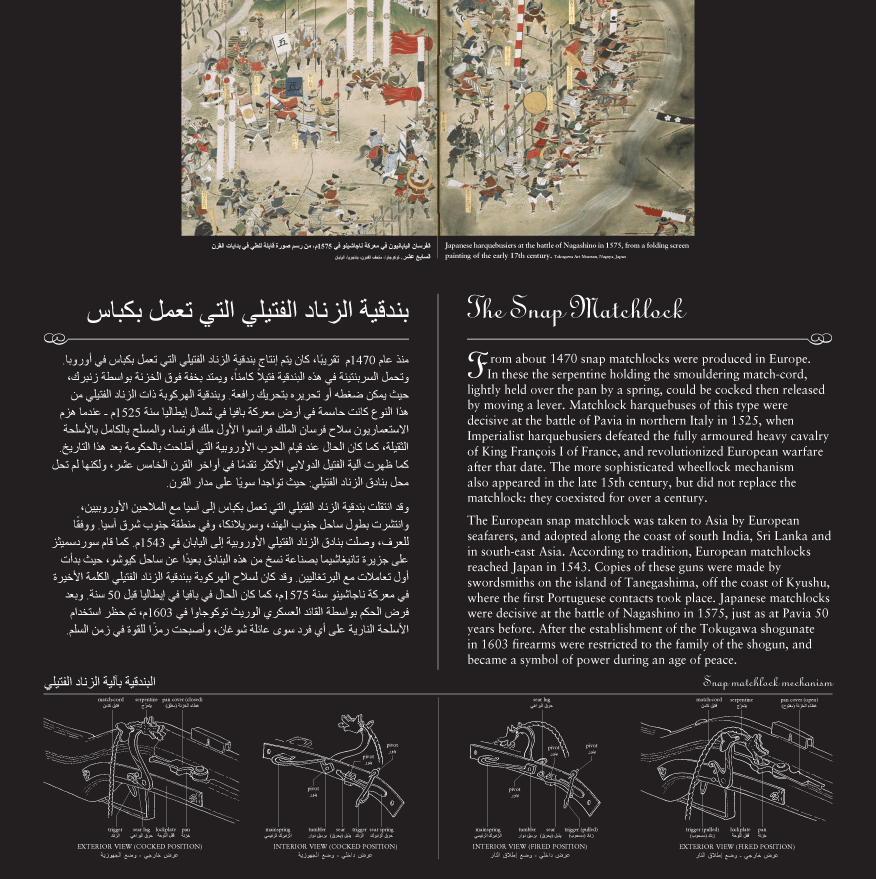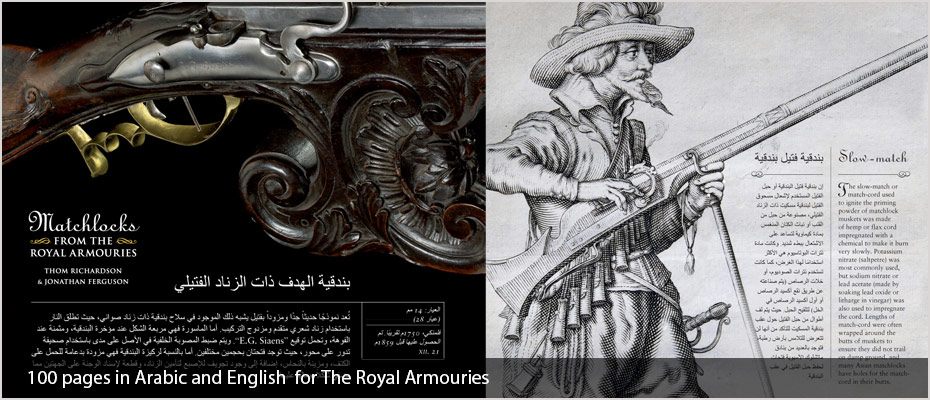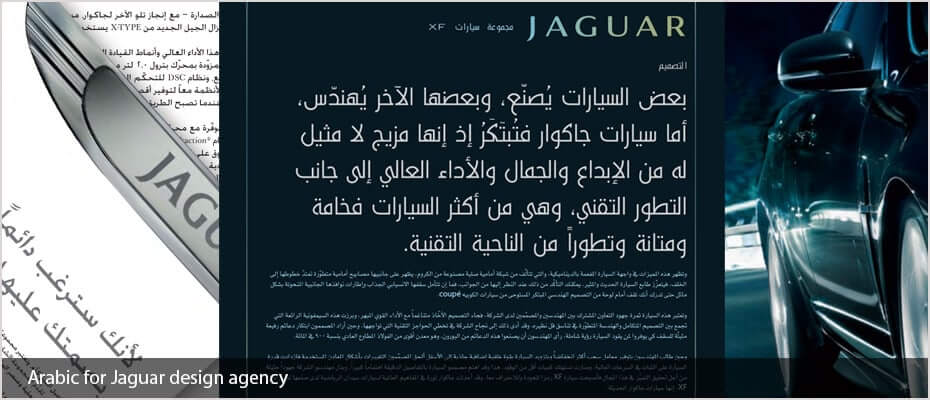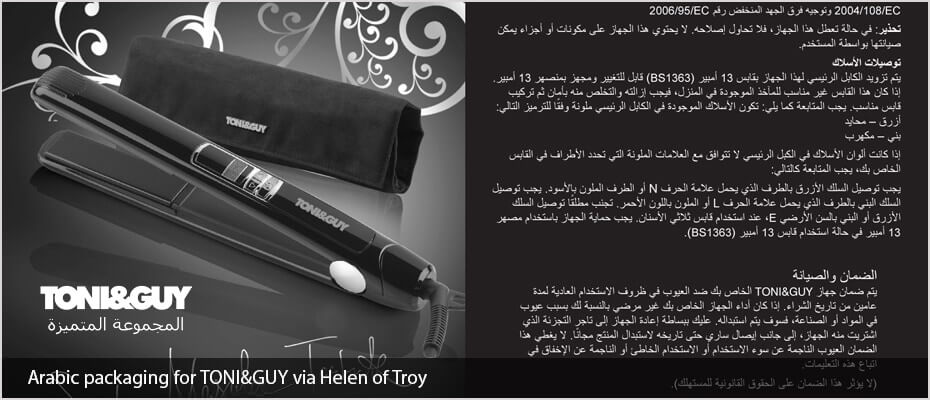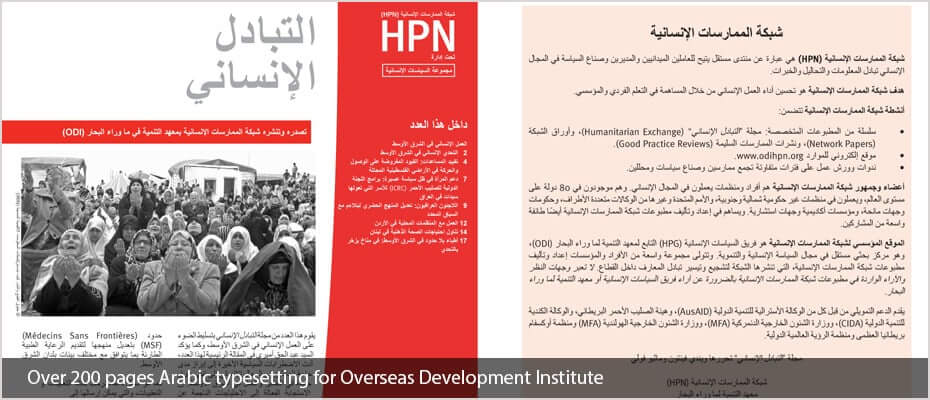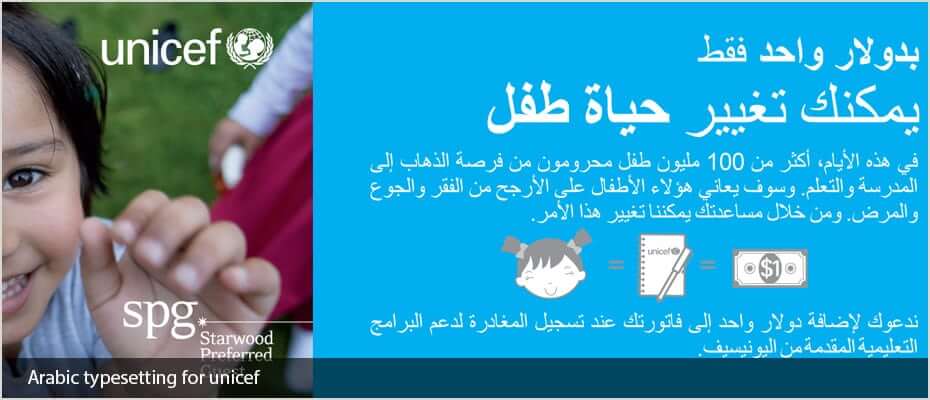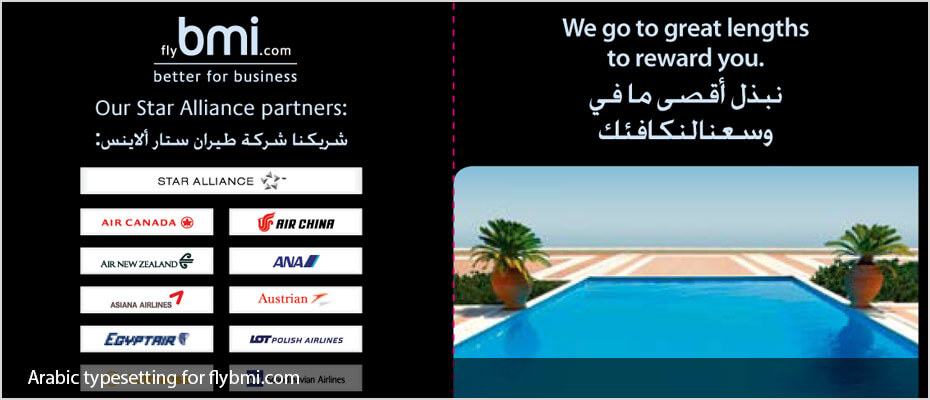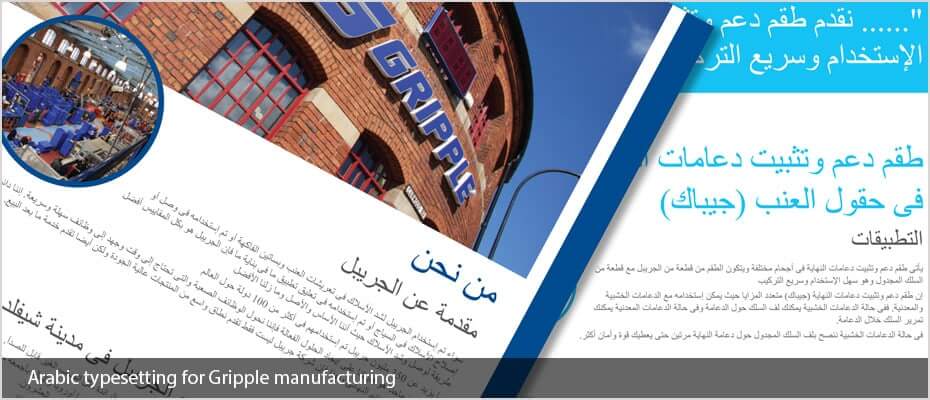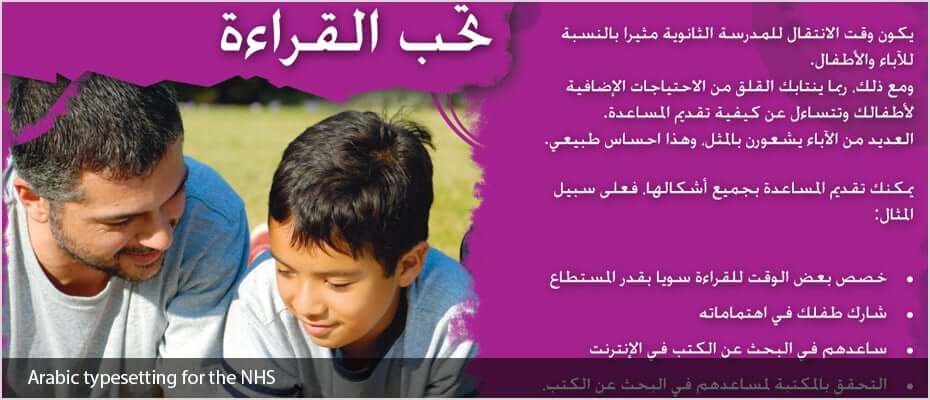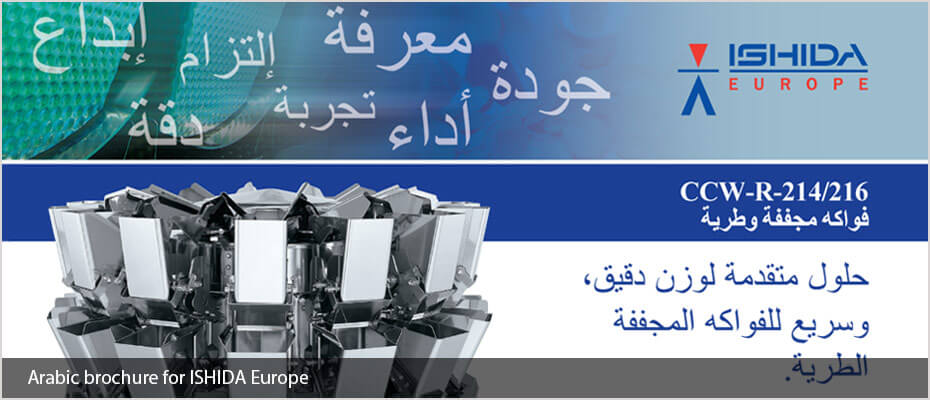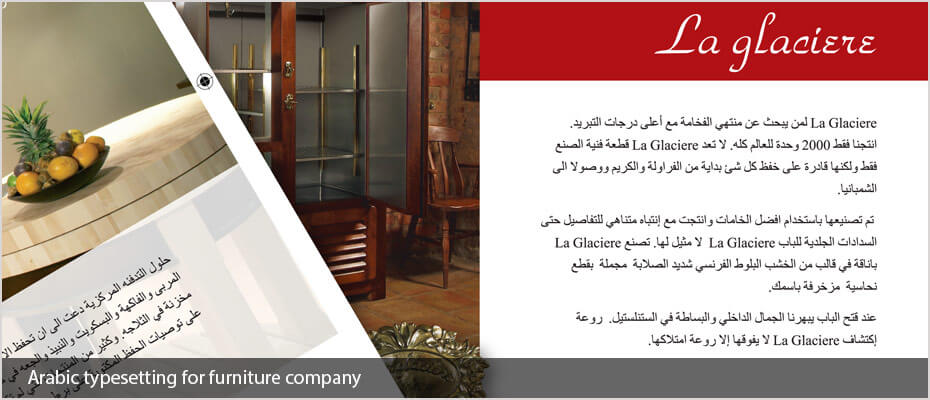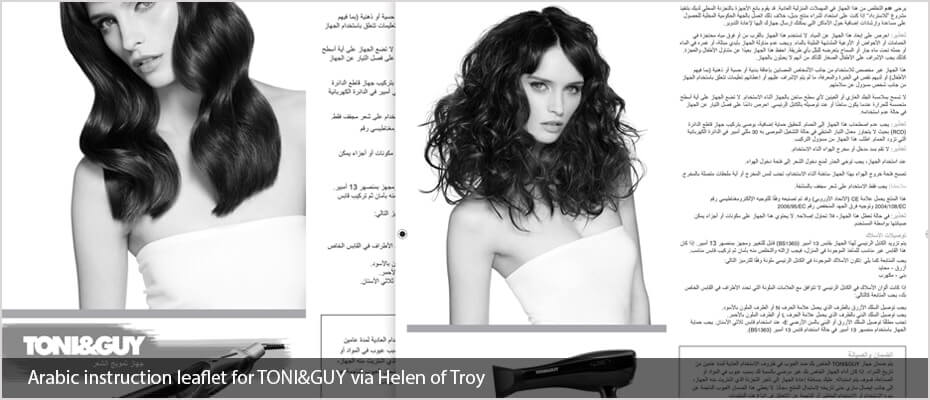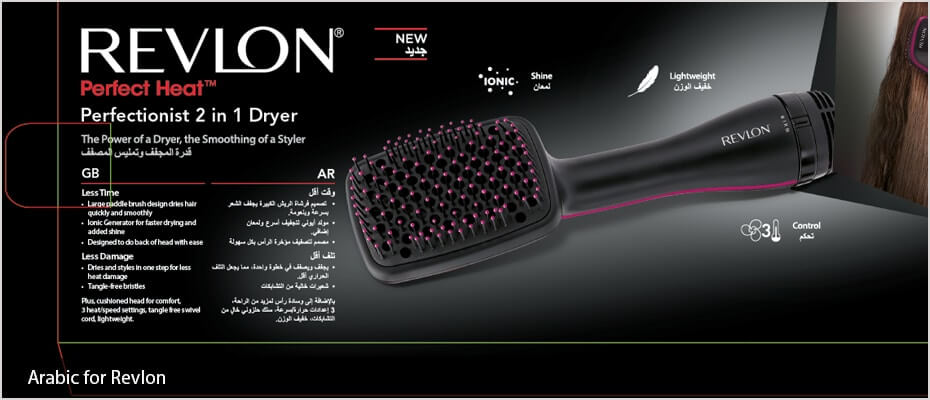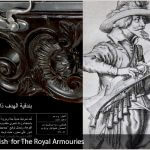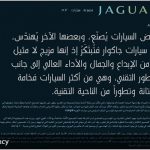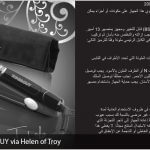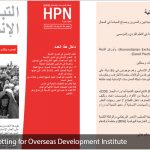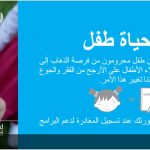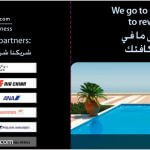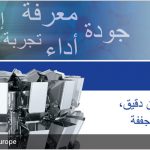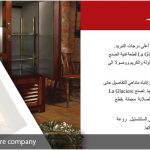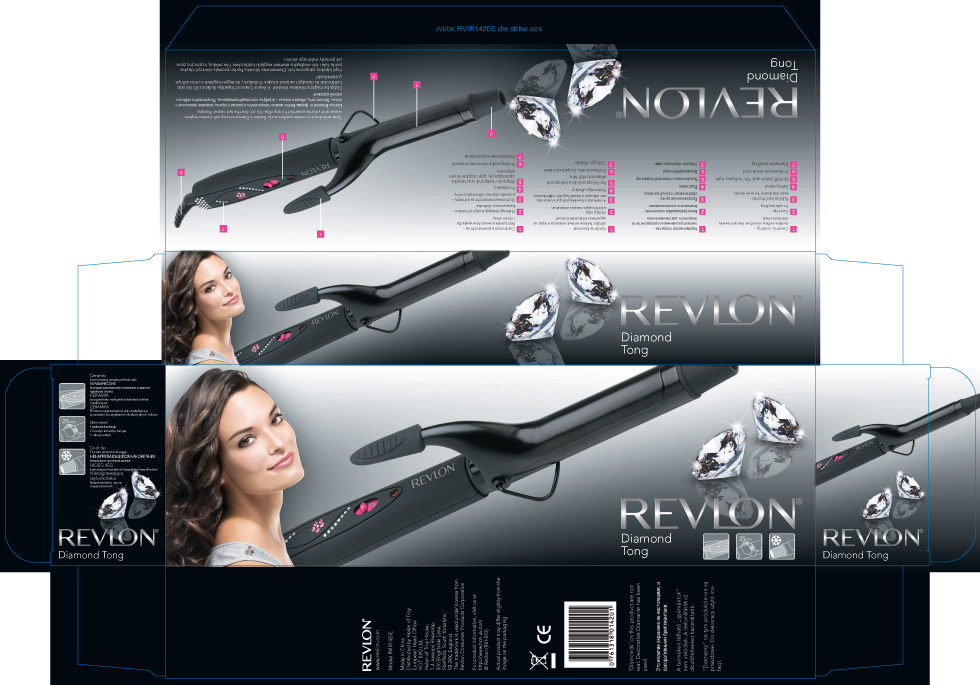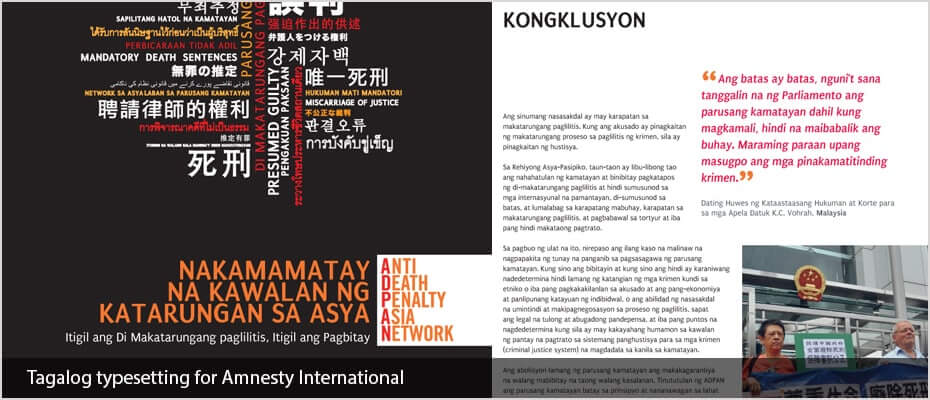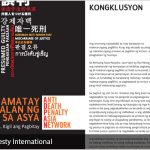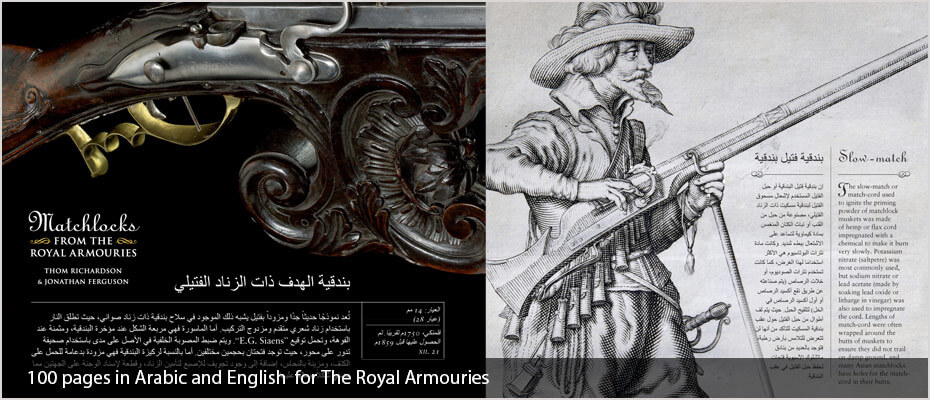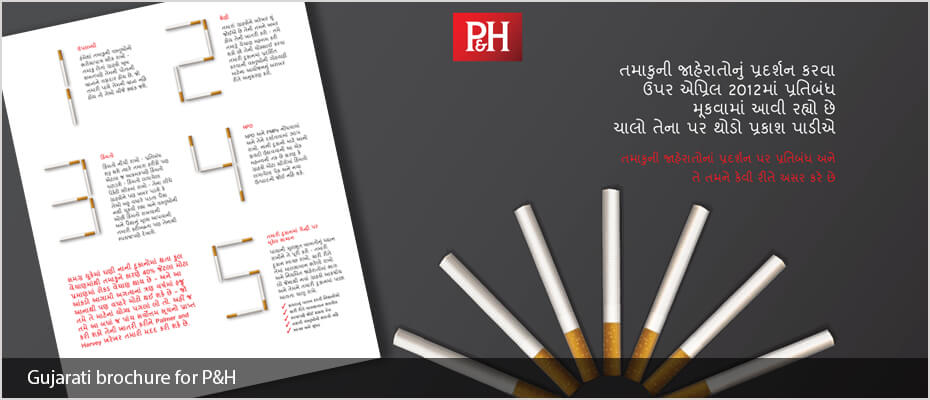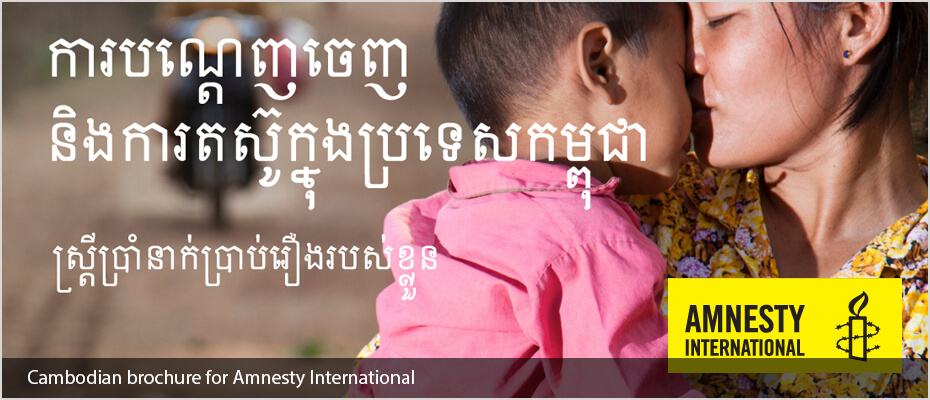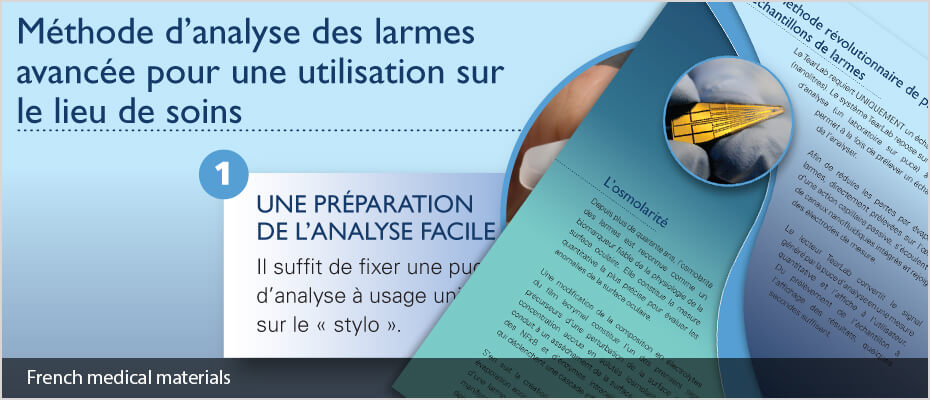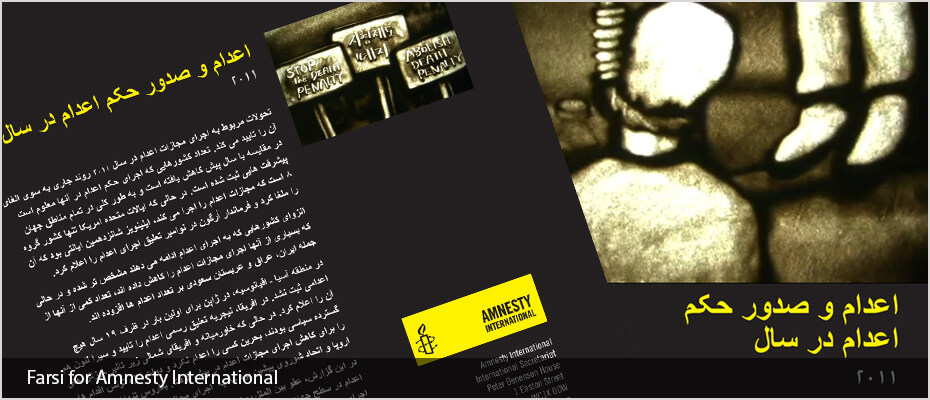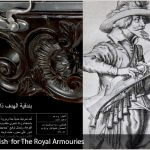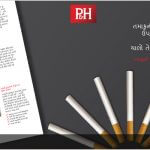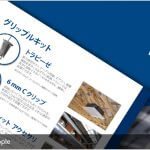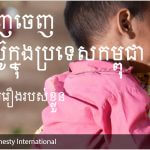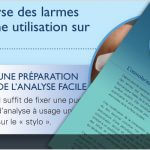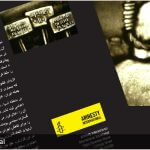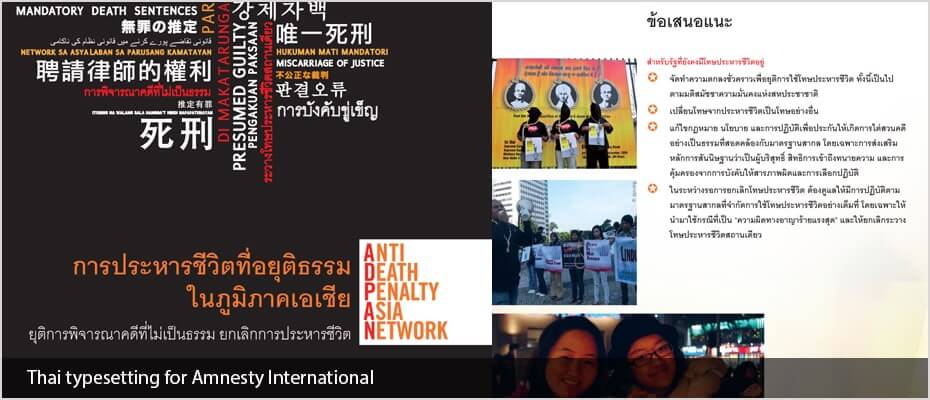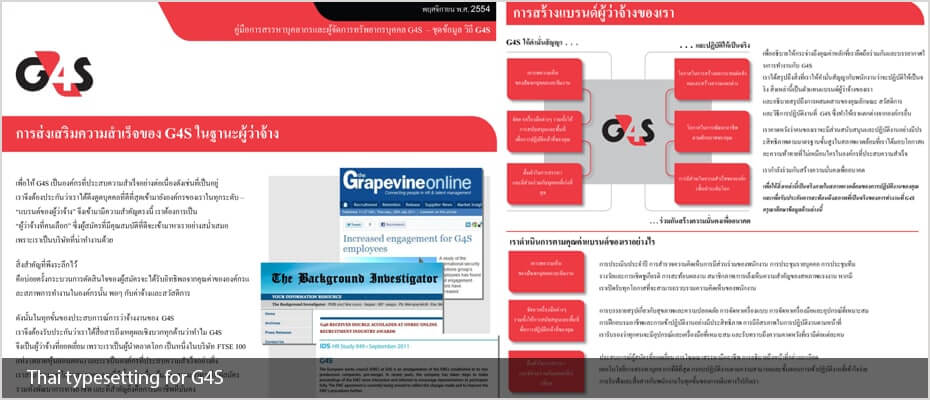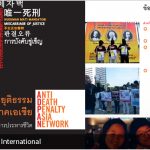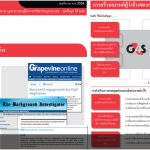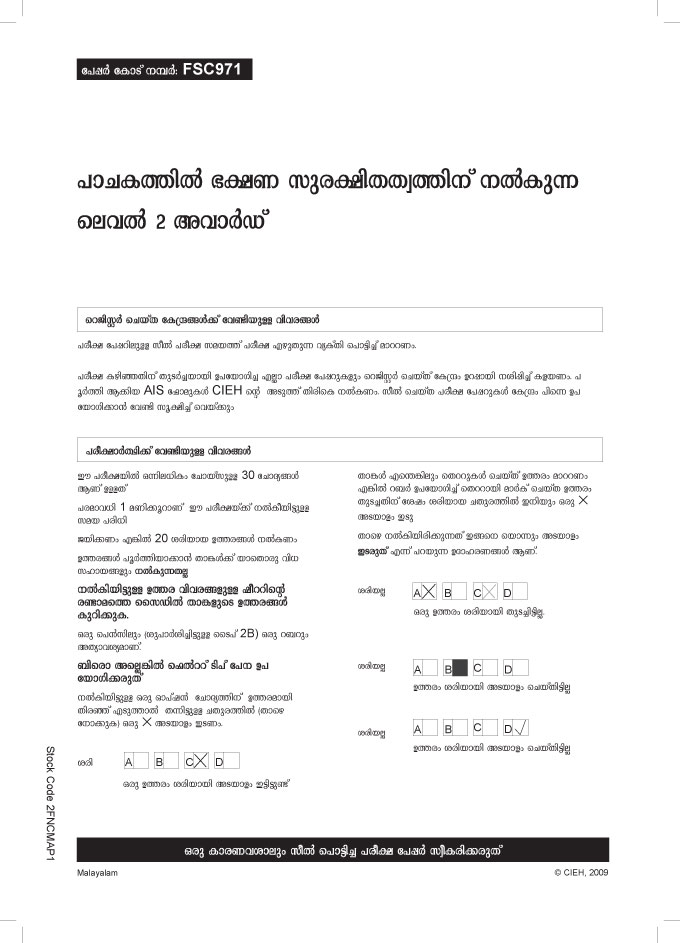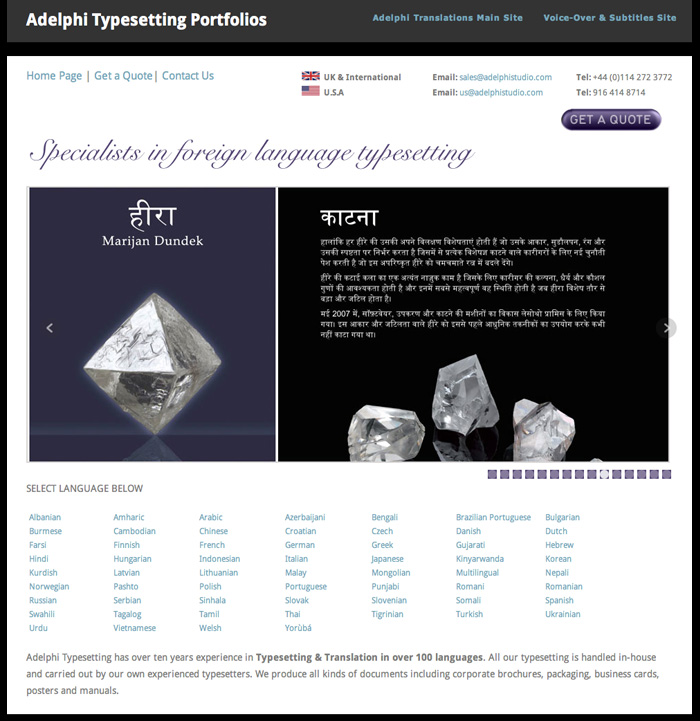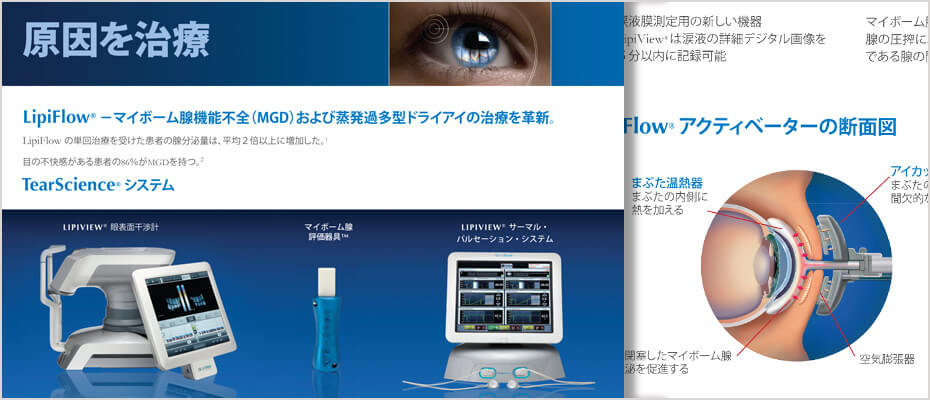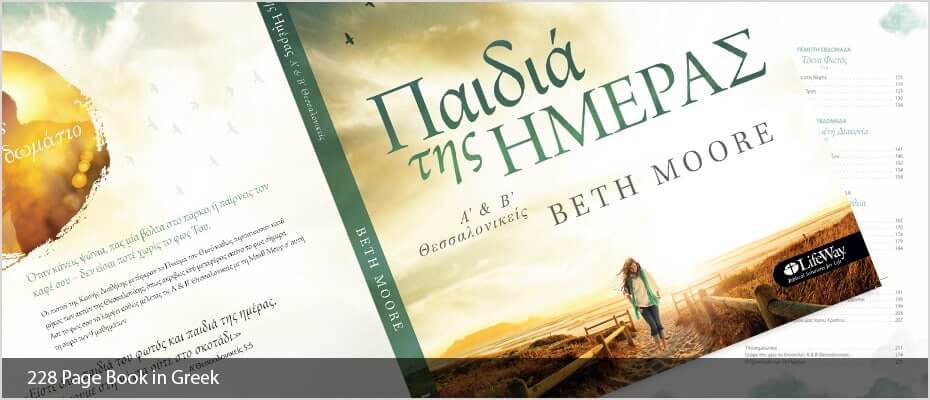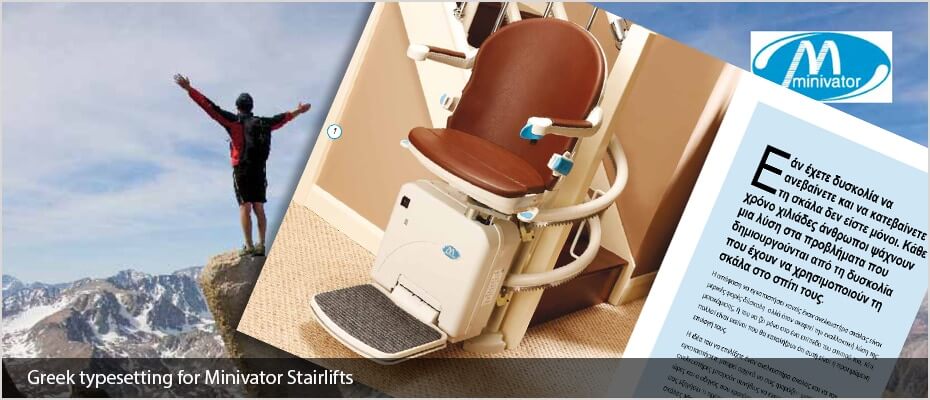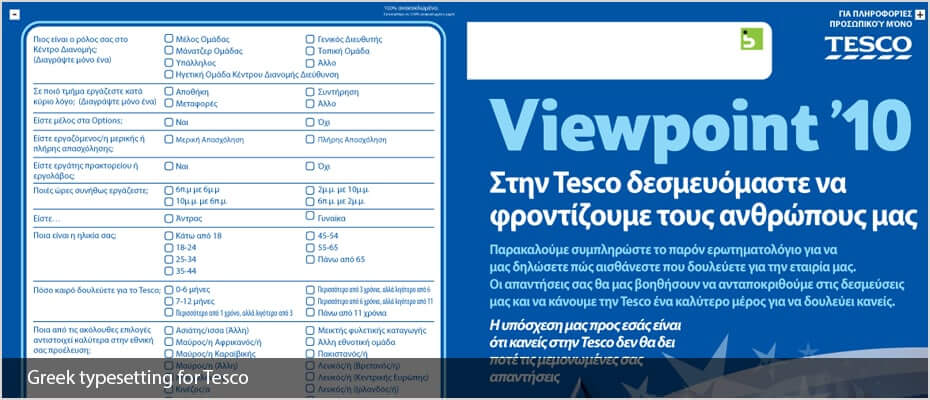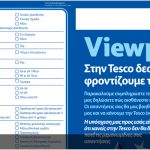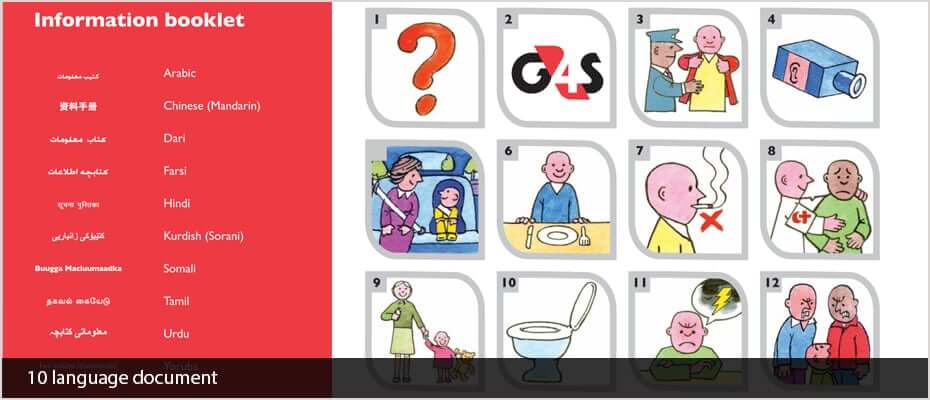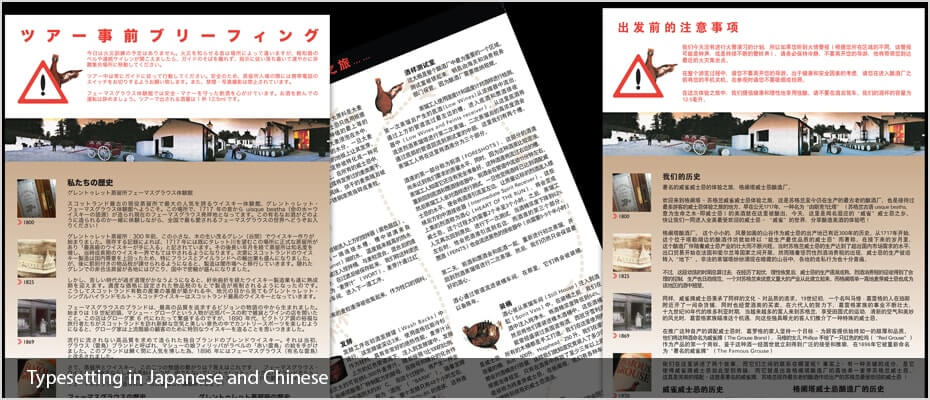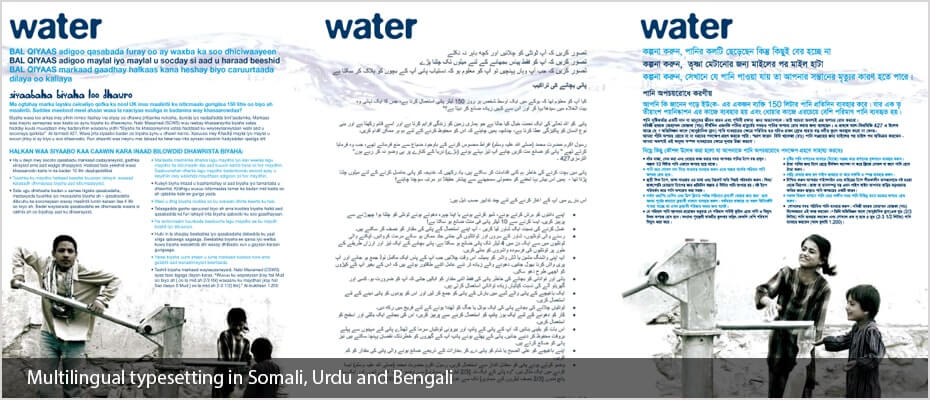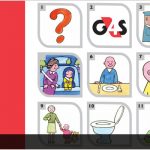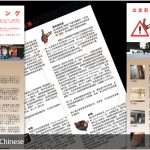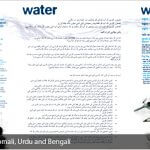100 Pages Arabic Typesetting For The Royal Armouries
Adelphi have just completed over 100 pages Arabic typesetting for the Royal Armouries for an exhibition in Oman.
Adelphi were approached by the Royal Armouries to typeset in Arabic posters, brochures and exhibition materials. As all the materials were bilingual with both English and Arabic on the same page or on opposing pages we had to make sure that the English text did not change from the original source.
Adelphi has been translating and typesetting Arabic and other languages for national and international companies including Jaguar, Vidal Sassoon, Cisco, Sony etc, direct or via they’re advertising and design agencies. We also work for international aid agencies such as Amnesty International, Refugee Action, UNICEF and the Refugee Council.
Other Arabic Typesetting Samples
Adelphi has its own in-house typesetting studio providing Arabic typesetting. All our typesetting is handled in-house and carried out by our own experienced typesetters. Adelphi Translations has been producing Arabic typesetting for over 20 years. We produce all kinds of Arabic print materials including corporate brochures, packaging, business cards, posters and manuals, not just in Arabic but also in over 100 other languages.We also produce monthly financial reports in Arabic for use in 5 Arabic countries.
Typesetting for Vidal Sassoon, Toni&Guy, Scholl and Revlon.
Adelphi have been producing packaging and manuals in French, German, Italian, Spanish, Russian, Arabic, Hungarian and Polish for Vidal Sassoon, Toni&Guy and Revlon.
Working for their design and product development team, we have translated and typeset a large variety of packaging, instructional and promotional materials for their international markets for products such as hair dryers, hair tongs and shiatsu massagers.
Adelphi often work for advertising agencies and design agencies on behalf of their clients. Here are some examples of packaging projects we have worked on.
Packaging is one of the more technically difficult projects to do. These often require special colours, cutters and flaps and a knowledge of typesetting is essential. Our head of typesetting cut his teeth on packaging in the creative department of Nestlé, working on a wide range of packaging for every kind of product.
Toni & Guy Product Information in Arabic
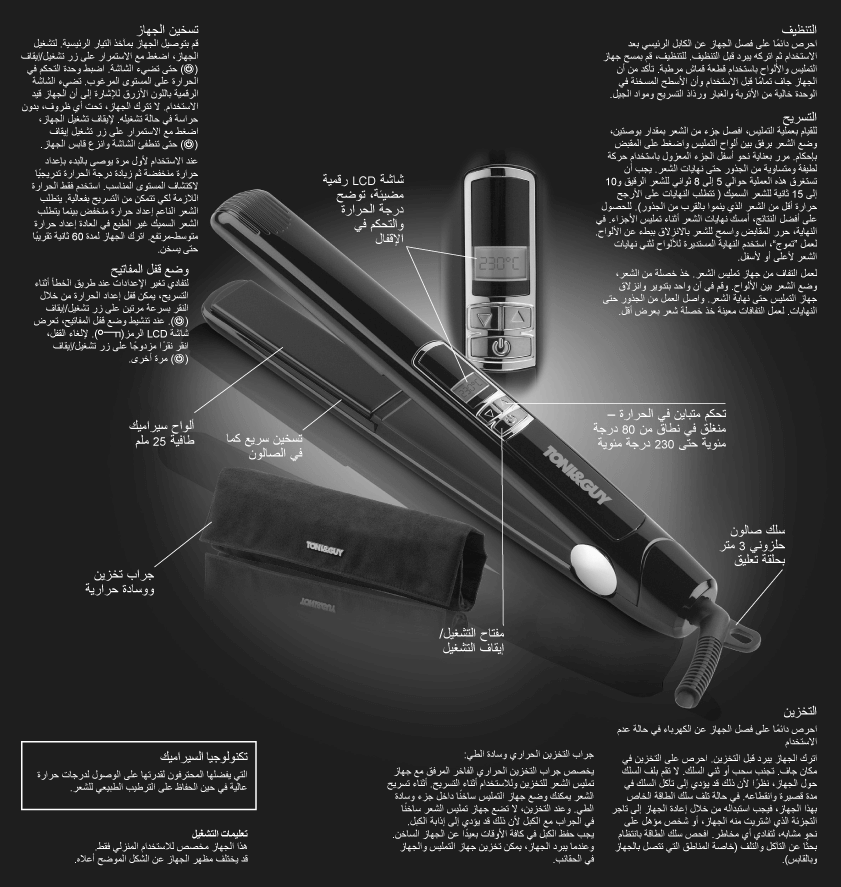
Toni & Guy Product Information in Arabic
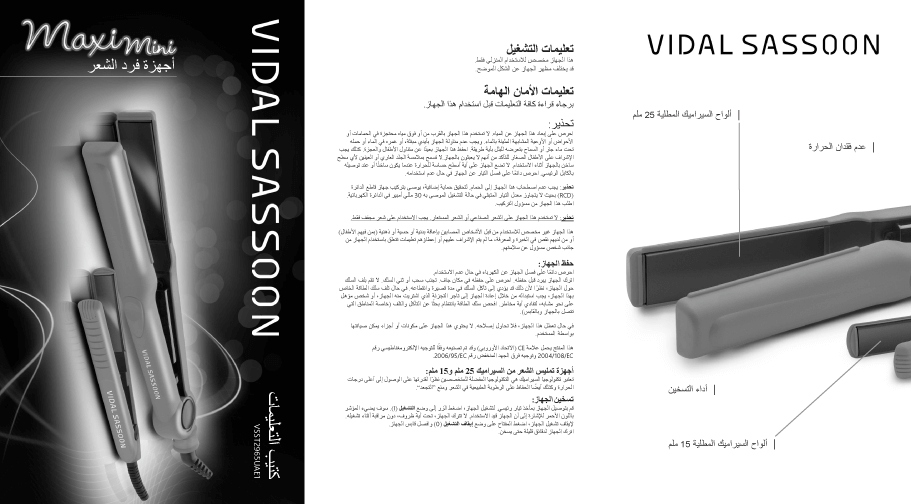
Vidal Sassoon Product Information in Arabic
Tagalog desktop publishing and typesetting services
Our Tagalog DTP and typesetting services include:
- Tagalog Document Translations
- Tagalog Proofreading
- Tagalog Desktop publishing and typesetting using all major publishing software
- Desktop publishing into over 100 languages
- Quality assurance checking throughout the process
- Localisation of graphics in documents
- Dedicated project manager
- Fast turnaround
- Print ready PDFs set to your specifications
- 100% work carried out in-house by our own DTP studio
Clients:
We work for companies and organisations such as Disney, Vidal Sassoon, and Jaguar Land Rover, to list a few. Plus international aid agencies such as Amnesty International, Refugee Action, UNICEF and the Refugee Council as well as many translation agencies and publishing companies all over the world.
A simple guide to localising InDesign files using translation software
By using an IDML file exported from InDesign we can speed up the translation and DTP process when using translation memory software. This method keeps all the formatting from the original InDesign file such as links, character and paragraph styles and fonts plus any interactive elements such as cross-references.
Click here to read more information
What is the difference between desktop publishing and typesetting
- Typesetting is also defined as: Typesetting is the process, the craft, of setting the type for a document, not to be confused with typography, which is the art of designing the type.
- Desktop publishing is also defined as The production of printed matter by means of a printer linked to a desktop computer, with special software.
Desktop publishing tips for localising English materials
- In some designs the pages are simply filled with text, leaving no room for text expansion. Most languages (with some notable exceptions) run longer than English and some of them run much longer. This causes the localised versions to have to make some sort of compromise: either text becomes smaller or a condensed font is used, or some material is completely cut out for brevity. Neither scenario is ideal, so it is much better to consider this aspect of the task at the design stage.
- Overuse of text formatting features such as drop caps, CAPITALISED TEXT, coloured text, bold text and italic text etc. can slow down the localisation process, as the formatting needs to be applied to the precise word or phrase in translation that is equivalent to the English. Sometimes, this does not work at all if the target language has a dramatically different word order.
- Embedded, non-editable text in images require extra attention and can slow things down dramatically, especially when over the main part of the image. Where possible, the text should be made available for editing in InDesign. If not, we will require all of the PSD files to work with.
- Avoid designing paragraphs or “word clouds” with mixed font sizes that look good in English but have no chance of being replicated in the target language: quite often they do not have the same impact when localised and can often be “lost in translation”. Furthermore, due to word order difference, keywords in English at the beginning of a sentence might end up in the middle or at the end of the sentence when translated.
- One of the most frequent issues we encounter is the incorrect and inconsistent usage of style sheets, in particular where one style has been used but in some instances, bold text, italics or even different fonts have been changed manually. This can cause significant delays in the localisation process.
- Sending the artwork to be typeset BEFORE it is signed off by the client is never a good idea, and neither are new design changes after we have already started the work. We can do nothing in situations like these where significant changes are requested mid-project but start again and present new figures for the work, delaying work and incurring further costs for the client.
Thai desktop publishing and typesetting services
Our Thai DTP and typesetting services include:
- Thai Document Translations
- Thai Proofreading
- Thai Desktop publishing and typesetting using all major publishing software
- Desktop publishing into over 100 languages
- Quality assurance checking throughout the process
- Localisation of graphics in documents
- Dedicated project manager
- Fast turnaround
- Print-ready PDFs set to your specifications
- 100% work carried out in-house by our own DTP studio
Clients:
We work for companies and organisations such as Disney, Vidal Sassoon, and Jaguar Land Rover, to list a few. Plus international aid agencies such as Amnesty International, Refugee Action, UNICEF and the Refugee Council as well as many translation agencies and publishing companies all over the world.
A simple guide to localising InDesign files using translation software
By using an IDML file exported from InDesign we can speed up the translation and DTP process when using translation memory software. This method keeps all the formatting from the original InDesign file such as links, character and paragraph styles and fonts plus any interactive elements such as cross-references.
Click here to read more information
Why choose Adelphi
Clients often come to us with Tamil translations produced by another agency or freelance linguist. However, in many cases, the translator will not have used a font that is compatible with any typesetting software, making the translation unusable. In cases where the wrong font is used, the entire translation has to be rewritten using a professional font, thus incurring additional costs for you.
Thanks to Adelphi’s typesetting expertise, we understand that Tamil fonts are often incompatible with each other and cannot simply be swapped with other Tamil fonts. When we produce the Tamil translation, we make sure that it is translated using a professional font that works in typesetting software packages.
Thai has very long compound words and can be difficult to break in the right place. Also, it is very important that the diacritics are lined up correctly otherwise the meaning of the word can change.
|
Correct Thai |
Incorrect Thai |
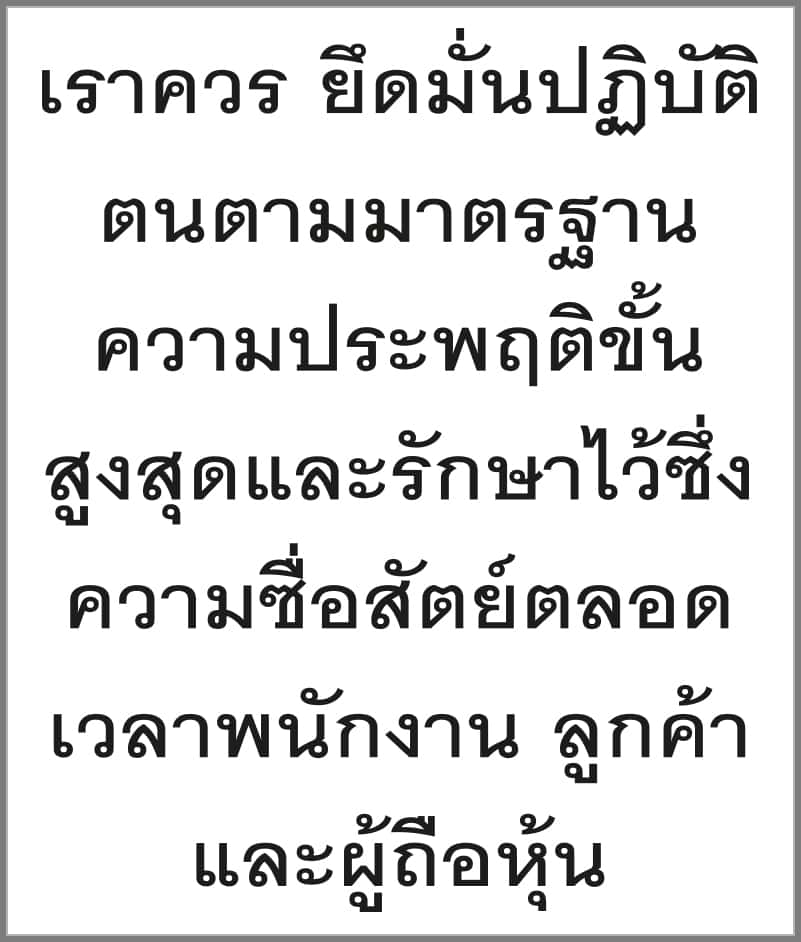 |
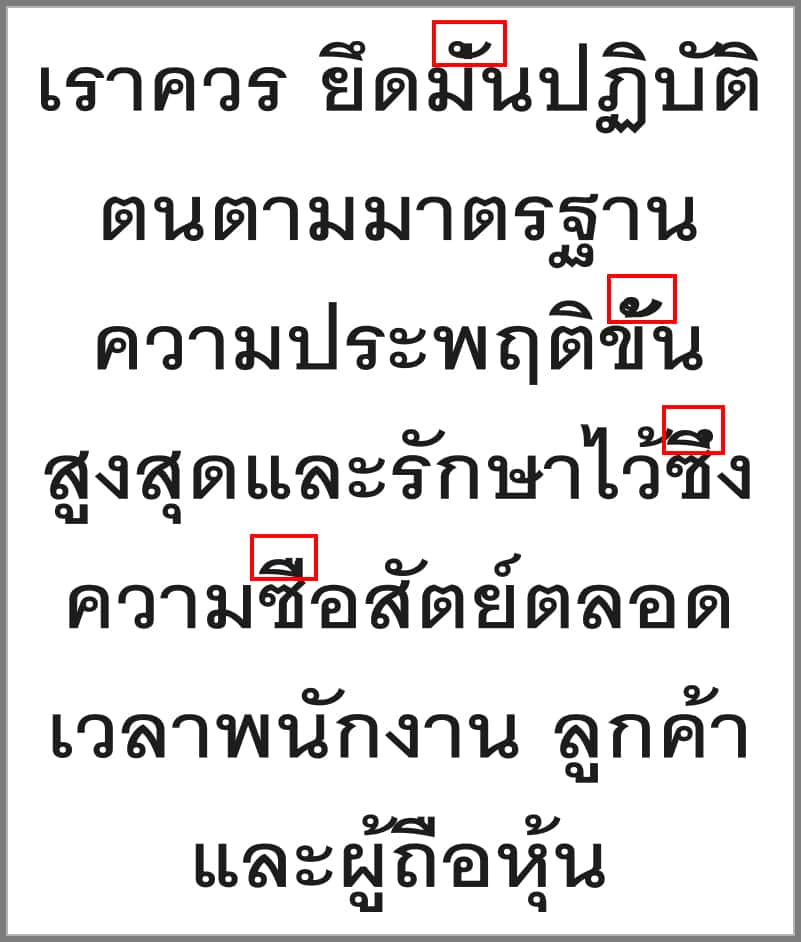 |
What is the difference between desktop publishing and typesetting
- Typesetting is also defined as: Typesetting is the process, the craft, of setting the type for a document, not to be confused with typography, which is the art of designing the type.
- Desktop publishing is also defined as: The production of printed matter by means of a printer linked to a desktop computer, with special software.
Desktop publishing tips for localising English materials
- In some designs the pages are simply filled with text, leaving no room for text expansion. Most languages (with some notable exceptions) run longer than English and some of them run much longer. This causes the localised versions to have to make some sort of compromise: either text becomes smaller or a condensed font is used, or some material is completely cut out for brevity. Neither scenario is ideal, so it is much better to consider this aspect of the task at the design stage.
- Overuse of text formatting features such as drop caps, CAPITALISED TEXT, coloured text, bold text and italic text etc. can slow down the localisation process, as the formatting needs to be applied to the precise word or phrase in translation that is equivalent to the English. Sometimes, this does not work at all if the target language has a dramatically different word order.
- Embedded, non-editable text in images require extra attention and can slow things down dramatically, especially when over the main part of the image. Where possible, the text should be made available for editing in InDesign. If not, we will require all of the PSD files to work with.
- Avoid designing paragraphs or “word clouds” with mixed font sizes that look good in English but have no chance of being replicated in the target language: quite often they do not have the same impact when localised and can often be “lost in translation”. Furthermore, due to word order difference, keywords in English at the beginning of a sentence might end up in the middle or at the end of the sentence when translated.
- One of the most frequent issues we encounter is the incorrect and inconsistent usage of style sheets, in particular where one style has been used but in some instances, bold text, italics or even different fonts have been changed manually. This can cause significant delays in the localisation process.
- Sending the artwork to be typeset BEFORE it is signed off by the client is never a good idea, and neither are new design changes after we have already started the work. We can do nothing in situations like these where significant changes are requested mid-project but start again and present new figures for the work, delaying work and incurring further costs for the client.
Malayalam typesetting (DTP) services
Adelphi have over 15 years experience with Malayalam typesetting (DTP) as well as Malayalam websites, voice overs and subtitles. Due to its lineage to both Sanskrit and Tamil, the Malayalam alphabet has the largest number of letters among the Indian languages. Malayalam script includes letters capable of representing all the sounds of Sanskrit and all Dravidian languages. The example below is of an exam paper we typeset into Malayalam. All our Malayalam typesetting is handled in-house and carried out by our own experienced typesetters. We produce all kinds of Malayalam typesetting including corporate brochures, packaging, business cards, posters and manuals.
Translating and typesetting Malayalam poses no technical problems as Malayalam fonts are supported on both Macs and PCS, and by all professional typesetting applications.
Adelphi is a full service translation agency, which as well as producing Malayalam translations also produces Malayalam websites, Malayalam subtitling and Malayalam voice-overs and has with offices in the UK and USA. When typesetting some languages it is important to know which font works for that particular language in a particular design package. By using Adelphi for your translation and typesetting we will ensure that the correct font is used to avoid any problems at the typesetting stage.
Adelphi has been translating and typesetting Malayalam and other languages for national and international companies including Jaguar, Vidal Sassoon, Cisco, Sony etc, direct or via their advertising and design agencies. We also work for international aid agencies such as Amnesty International, Refugee Action, UNICEF and the Refugee Council.
Adelphi has typeset documents in over 100 languages and have built up expertise in using InDesign, QuarkXpress, FrameMaker, Illustrator etc. as well as all Microsoft applications.
Adelphi Typesetting is our latest website with portfolios in over 60 languages VIEW PORTFOLIOS
——————————————————————————————————————————————————————————————————
Japanese typesetting (DTP) services
Adelphi started out by specializing in Japanese typesetting 15 years ago but even before Adelphi was established their Managing Director lived in Japan for 10 years working at a publishing house in Tokyo. Since then Adelphi has translated and typeset over 120 different languages. Our in-house Japanese staff proofread all Japanese typeset work before approving it for sending to the client.
When commissioning Japanese typesetting and translation it is important to prepare a style sheet for words staying in English, otherwise they will be transliterated using Katakana, which is a separate Japanese alphabet used only for foreign words and names. E.g. Coffee is spelt コーヒー pronounced KOH-HE.
Translating and typesetting Japanese poses no technical problems as Japanese fonts are supported on both Macs and PCS, and by all professional typesetting applications.
——————————————————————————————————————————————————————————————————
Adelphi Typesetting is our new website with typesetting portfolios in over 60 languages
VIEW PORTFOLIO
Japanese Typesetting Things to Consider
Like Chinese, Japanese sentences do not have spaces between words, and words should not be cut at the wrong place. Another issue is that Japanese is a double bite language meaning that spaces between characters can vary, this is usually not a problem but it means that spaces before and after such things as commas, brackets etc look longer than normal and sometimes clients ask for these to be changed not understanding that this is the way it is supposed to be in written Japanese.
Japanese Voice-Overs and Japanese Subtitling
We also produce multilingual voice recordings and multilingual subtitles. To see samples please visit our dedicated website at www.adelphistudio.com
——————————————————————————————————————————————————————————————————
Arabic Typesetting Services
Professional Arabic Typesetting Services
Adelphi has its own in-house typesetting studio providing Arabic typesetting. All our Arabic typesetting is handled in-house and carried out by our own experienced studio.
Adelphi Translations Ltd. has over 20 years experience in handling Arabic, Kurdish, Farsi, Urdu and other right to left languages including translations, proofreading, typesetting and the delivery of print ready PDFs set your your specification.
[soliloquy id=”11164″]
As Arabic is a right to left language we use InDesign with a special plugin to typeset all of our Arabic. We do have a converter that can convert QuarkXpress to InDesign if needed. Part of the process in converting documents English to Arabic is flipping the documents so that they read from back to front with the correct pagination. This can cause some problems when the English version has not been designed with this in mind and sometimes requires judgments to be made to make the text and images read correctly while keeping the style required.
We recently typeset a 100 page document, posters and labels in Arabic & English for an event in Oman for the Royal Armouries. We also set financial documents for every month for the use in the UAE, Egypt, Saudi Arabia, and Lebanon. Other regular clients for Arabic typesetting are Vidal Sassoon, Toni & Guy, Jaguar Land rover and many others. We also work for international aid agencies such as Amnesty International, Refugee Action, UNICEF and the Refugee Council. As well as Arabic, Adelphi also translates and typesets other right to left languages such as Urdu, Farsi, Dari and Pashto etc.
Arabic Translation Services
Adelphi aims to provide a full service typesetting service to our customers. The translation itself is just a part of this service. Our experienced team will work with you to fully understand your project in order to effectively manage the workflow from concept to completion. Our ultimate aim is to facilitate your communication objectives.
Adelphi is a Arabic typesetting publishing and translation agency that aims to provide a full localization service to our customers.
Our Arabic typesetting services include:
- Arabic Document Translations
- Arabic Proofreading
- Arabic typesetting using InDesign
- QuarkXpress conversion to InDesign
- DTPQA quality assurance checking of documents
- Localisation of graphics in documents
- Dedicated project manager
- Fast turnaround
- Print ready PDFs set to your specifications
- 100% work carried out In-house by our own DTP studio
Greek desktop publishing and typesetting services
Our Greek DTP and typesetting services include:
- Greek Document Translations
- Greek Proofreading
- Greek Desktop publishing and typesetting using all major publishing software
- Desktop publishing into over 120 languages
- Quality assurance checking throughout the process
- Localisation of graphics in documents
- Dedicated project manager
- Fast turnaround
- Print ready PDFs set to your specifications
- 100% work carried out In-house by our own DTP studio
Clients:
We work for companies and organisations such as Disney, Vidal Sassoon, and Jaguar Land Rover, to list a few. Plus international aid agencies such as Amnesty International, Refugee Action, UNICEF and the Refugee Council as well as many translation agencies and publishing companies all over the world.
A simple guide to localising InDesign files using translation software
By using an IDML file exported from InDesign we can speed up the translation and DTP process when using translation memory software. This method keeps all the formatting from the original InDesign file such as links, character and paragraph styles and fonts plus any interactive elements such as cross-references.
Click here to read more information
What is the difference between desktop publishing and typesetting
- Typesetting is also defined as: Typesetting is the process, the craft, of setting the type for a document, not to be confused with typography, which is the art of designing the type.
- Desktop publishing is also defined as The production of printed matter by means of a printer linked to a desktop computer, with special software.
Desktop publishing tips for localising English materials
- In some designs the pages are simply filled with text, leaving no room for text expansion. Most languages (with some notable exceptions) run longer than English and some of them run much longer. This causes the localised versions to have to make some sort of compromise: either text becomes smaller or a condensed font is used, or some material is completely cut out for brevity. Neither scenario is ideal, so it is much better to consider this aspect of the task at the design stage.
- Overuse of text formatting features such as drop caps, CAPITALISED TEXT, coloured text, bold text and italic text etc. can slow down the localisation process, as the formatting needs to be applied to the precise word or phrase in translation that is equivalent to the English. Sometimes, this does not work at all if the target language has a dramatically different word order.
- Embedded, non-editable text in images require extra attention and can slow things down dramatically, especially when over the main part of the image. Where possible, the text should be made available for editing in InDesign. If not, we will require all of the PSD files to work with.
- Avoid designing paragraphs or “word clouds” with mixed font sizes that look good in English but have no chance of being replicated in the target language: quite often they do not have the same impact when localised and can often be “lost in translation”. Furthermore, due to word order difference, keywords in English at the beginning of a sentence might end up in the middle or at the end of the sentence when translated.
- One of the most frequent issues we encounter is the incorrect and inconsistent usage of style sheets, in particular where one style has been used but in some instances, bold text, italics or even different fonts have been changed manually. This can cause significant delays in the localisation process.
- Sending the artwork to be typeset BEFORE it is signed off by the client is never a good idea, and neither are new design changes after we have already started the work. We can do nothing in situations like these where significant changes are requested mid-project but start again and present new figures for the work, delaying work and incurring further costs for the client.
English to Mandarin (Simplified Chinese) Translation and Typesetting
[soliloquy id=”11182″]
Traditional (Cantonese) and Simplified (Mandarin) Chinese
Both Mandarin and Cantonese refer to spoken languages whereas Traditional and Simplified donates the writing systems. Mandarin is the official language in mainland China and Cantonese is used in Hong Kong, Macau and the province Guangdong.
Mandarin text contracts around 15% less than the English source so when typesetting Mandarin it could cause problems if this has not been taken into account in the original design.
All our Mandarin typesetting is handled in-house and carried out by our own experienced typesetters. We produce all kinds of Mandarin typesetting including corporate brochures, packaging, business cards, posters and manuals.
Adelphi is a full service translation agency, which as well as producing Mandarin translations also produces Mandarin subtitling and Mandarin voice-overs and has with offices in the UK and USA. When typesetting some languages it is important to know which font works for that particular language in a particular design package. By using Adelphi for your translation and typesetting we will ensure that the correct font is used to avoid any problems at the typesetting stage.
Adelphi has been translating and typesetting Mandarin and other languages for national and international companies including Jaguar, Vidal Sassoon, Cisco, Sony etc, direct or via their advertising and design agencies. We also work for international aid agencies such as Amnesty International, Refugee Action, UNICEF and the Refugee Council.
Multilingual desktop publishing in any language
Clients:
For Amnesty International we have typeset brochures in Kurdish Sorani, Tamil, Italian, Chinese, Cambodian, Croatian, Farsi, Albanian, Malay, Urdu, Hungarian, Ukrainian, Sinhalese, Indonesian, Nepali, Korean, Russian, Lithuanian, Portuguese, Brazilian Portuguese, Khmer, Georgian, Serbian, Kinyarwanda, Swahili, Hindi, Bengali and Greek.
We work for companies and organisations such as Disney, Vidal Sassoon, and Jaguar Land Rover, to list a few. Plus international aid agencies such as Amnesty International, Refugee Action, UNICEF and the Refugee Council as well as many translation agencies all over the world.
A simple guide to localising InDesign files using translation software
By using an IDML file exported from InDesign we can speed up the translation and DTP process when using translation memory software. This method keeps all the formatting from the original InDesign file such as links, character and paragraph styles and fonts plus any interactive elements such as cross-references.
Click here to read more information
Desktop publishing tips for localising English materials
- In some designs the pages are simply filled with text, leaving no room for text expansion. Most languages (with some notable exceptions) run longer than English and some of them run much longer. This causes the localised versions to have to make some sort of compromise: either text becomes smaller or a condensed font is used, or some material is completely cut out for brevity. Neither scenario is ideal, so it is much better to consider this aspect of the task at the design stage.
- Overuse of text formatting features like coloured text, bold text and italic text etc. can slow down the localisation process, as the formatting needs to be applied to the precise word or phrase in translation that is equivalent to the English. Sometimes, this does not work at all if the target language has a dramatically different word order.
- Embedded, non-editable text in images require extra attention and can slow things down dramatically, especially when over the main part of the image. Where possible, the text should be made available for editing in InDesign. If not, we will require all of the PSD files to work with.
- Avoid designing paragraphs or “word clouds” with mixed font sizes that look good in English but have no chance of being replicated in the target language: quite often they do not have the same impact when localised and can often be “lost in translation”. Furthermore, due to word order difference, keywords in English at the beginning of a sentence might end up in the middle or at the end of the sentence when translated.
- One of the most frequent issues we encounter is the incorrect and inconsistent usage of style sheets, in particular where one style has been used but in some instances, bold text, italics or even different fonts have been changed manually. This can cause significant delays in the localisation process.
- Sending the artwork to be typeset BEFORE it is signed off by the client is never a good idea, and neither are new design changes after we have already started the work. We can do nothing in situations like these where significant changes are requested mid-project but start again and present new figures for the work, delaying work and incurring further costs for the client.
Adelphi Translations Limited is a company registered in England and Wales.
Company Number 06989736 · Registered Office Barnsley Digital Media Centre, County Way, Barnsley, S70 2JW, UK

